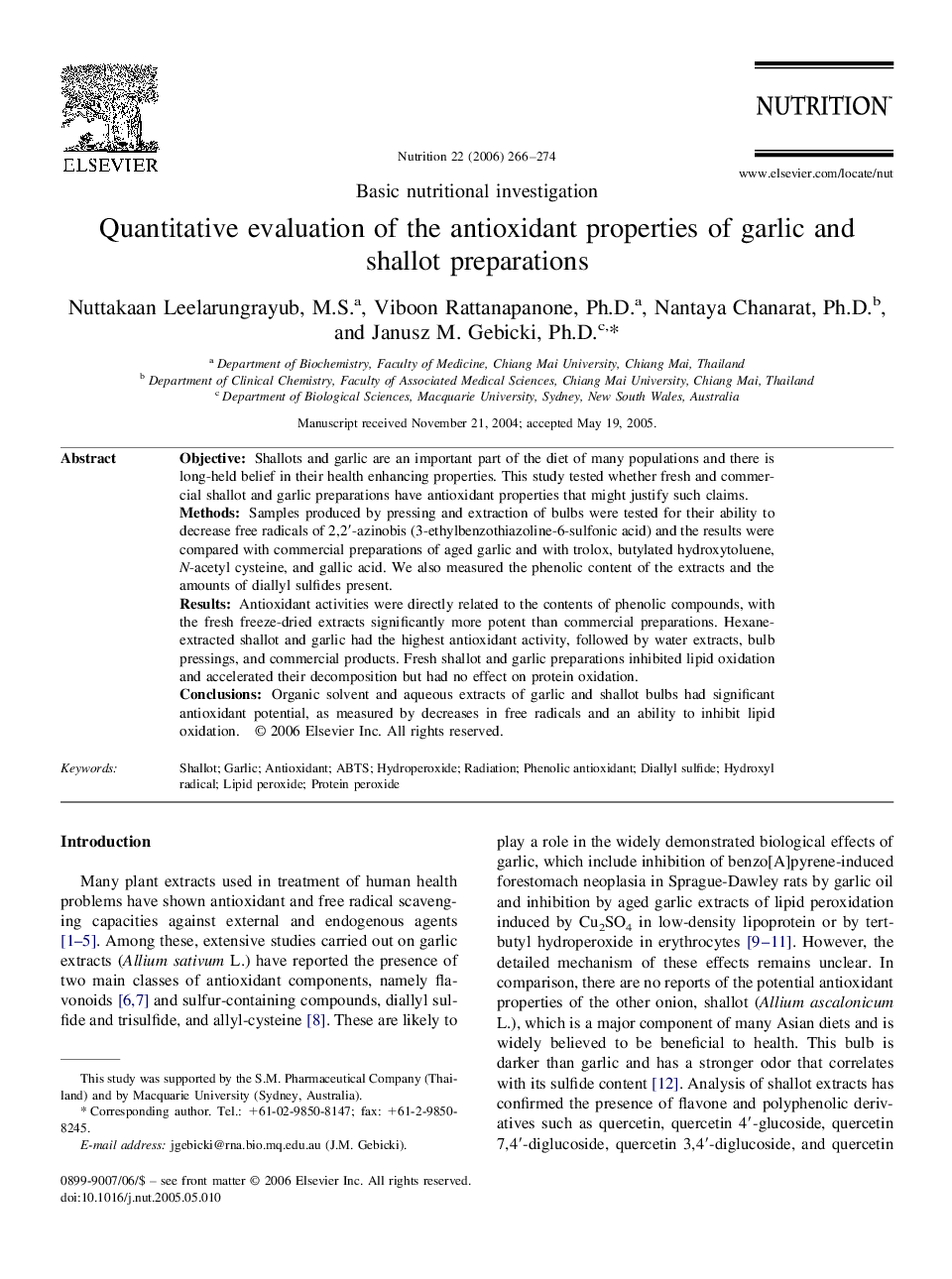| Article ID | Journal | Published Year | Pages | File Type |
|---|---|---|---|---|
| 3277732 | Nutrition | 2006 | 9 Pages |
ObjectiveShallots and garlic are an important part of the diet of many populations and there is long-held belief in their health enhancing properties. This study tested whether fresh and commercial shallot and garlic preparations have antioxidant properties that might justify such claims.MethodsSamples produced by pressing and extraction of bulbs were tested for their ability to decrease free radicals of 2,2′-azinobis (3-ethylbenzothiazoline-6-sulfonic acid) and the results were compared with commercial preparations of aged garlic and with trolox, butylated hydroxytoluene, N-acetyl cysteine, and gallic acid. We also measured the phenolic content of the extracts and the amounts of diallyl sulfides present.ResultsAntioxidant activities were directly related to the contents of phenolic compounds, with the fresh freeze-dried extracts significantly more potent than commercial preparations. Hexane-extracted shallot and garlic had the highest antioxidant activity, followed by water extracts, bulb pressings, and commercial products. Fresh shallot and garlic preparations inhibited lipid oxidation and accelerated their decomposition but had no effect on protein oxidation.ConclusionsOrganic solvent and aqueous extracts of garlic and shallot bulbs had significant antioxidant potential, as measured by decreases in free radicals and an ability to inhibit lipid oxidation.
